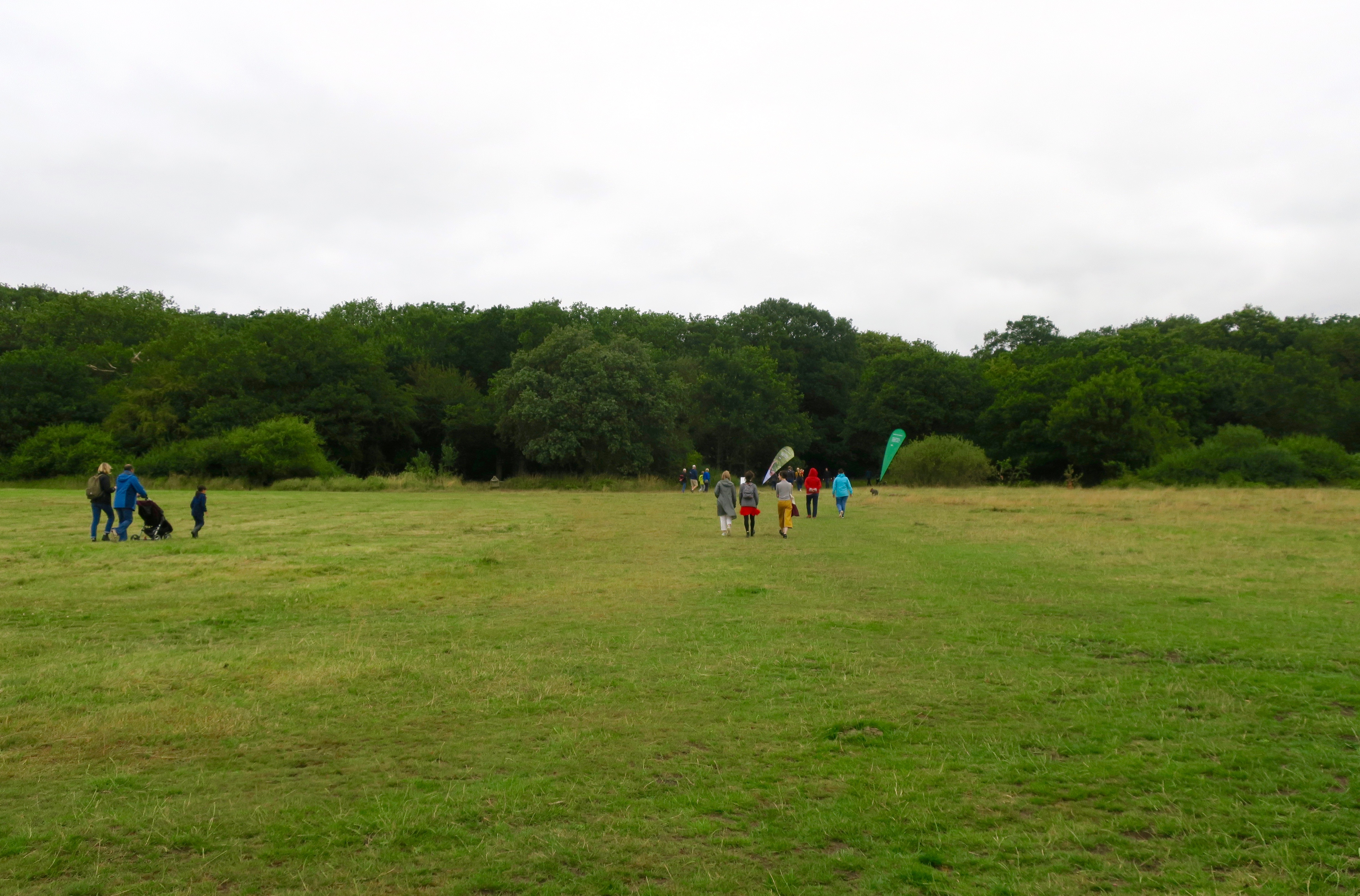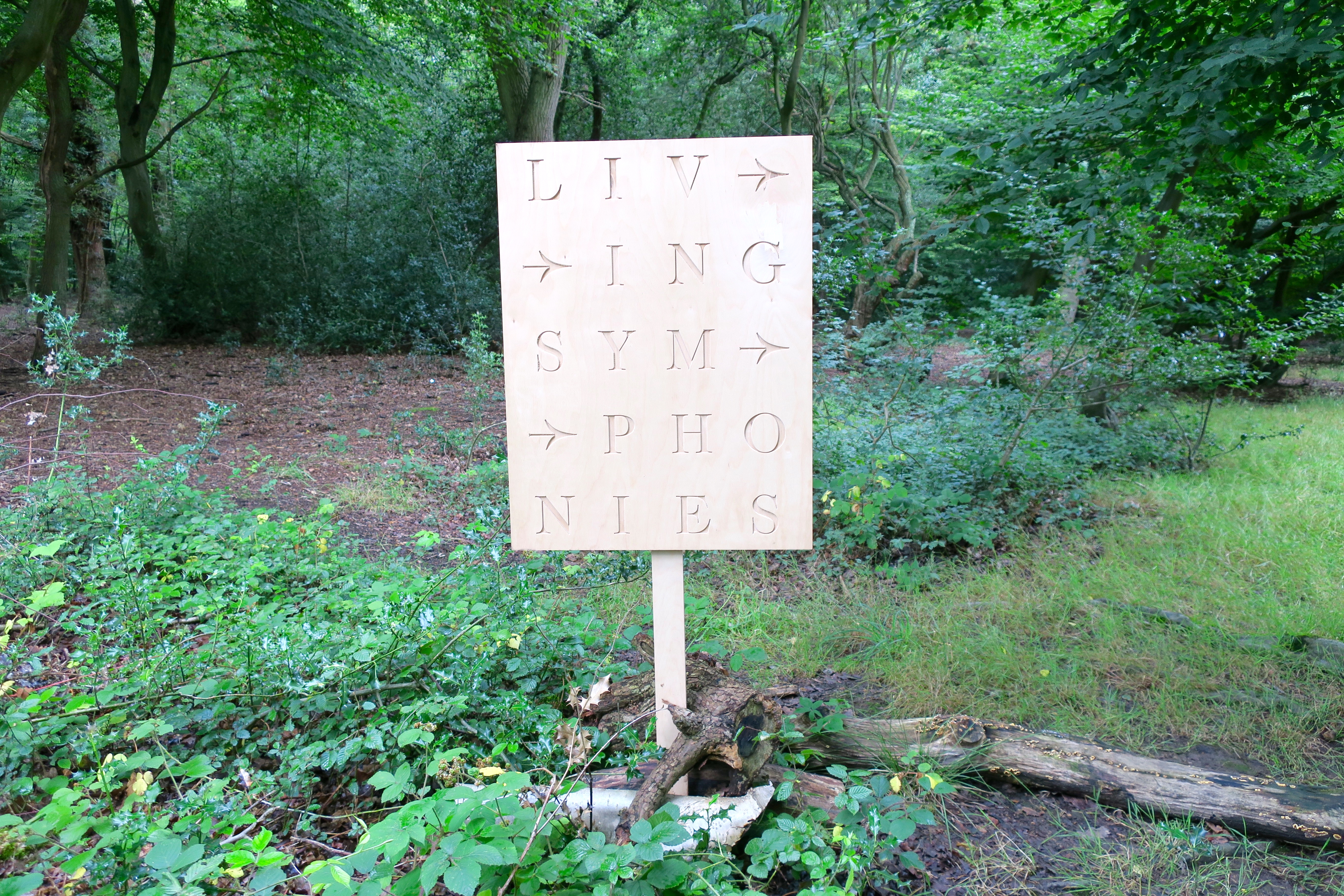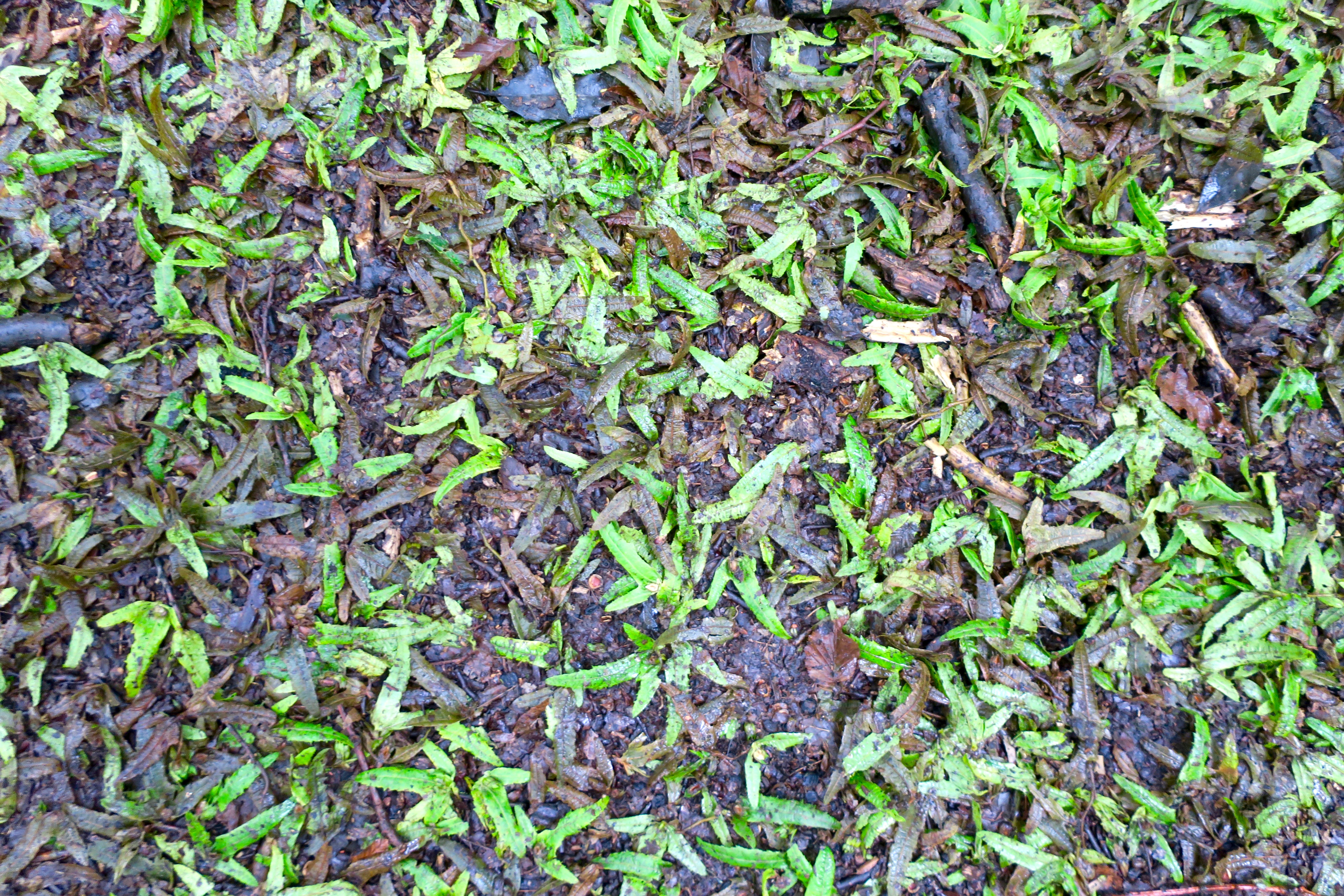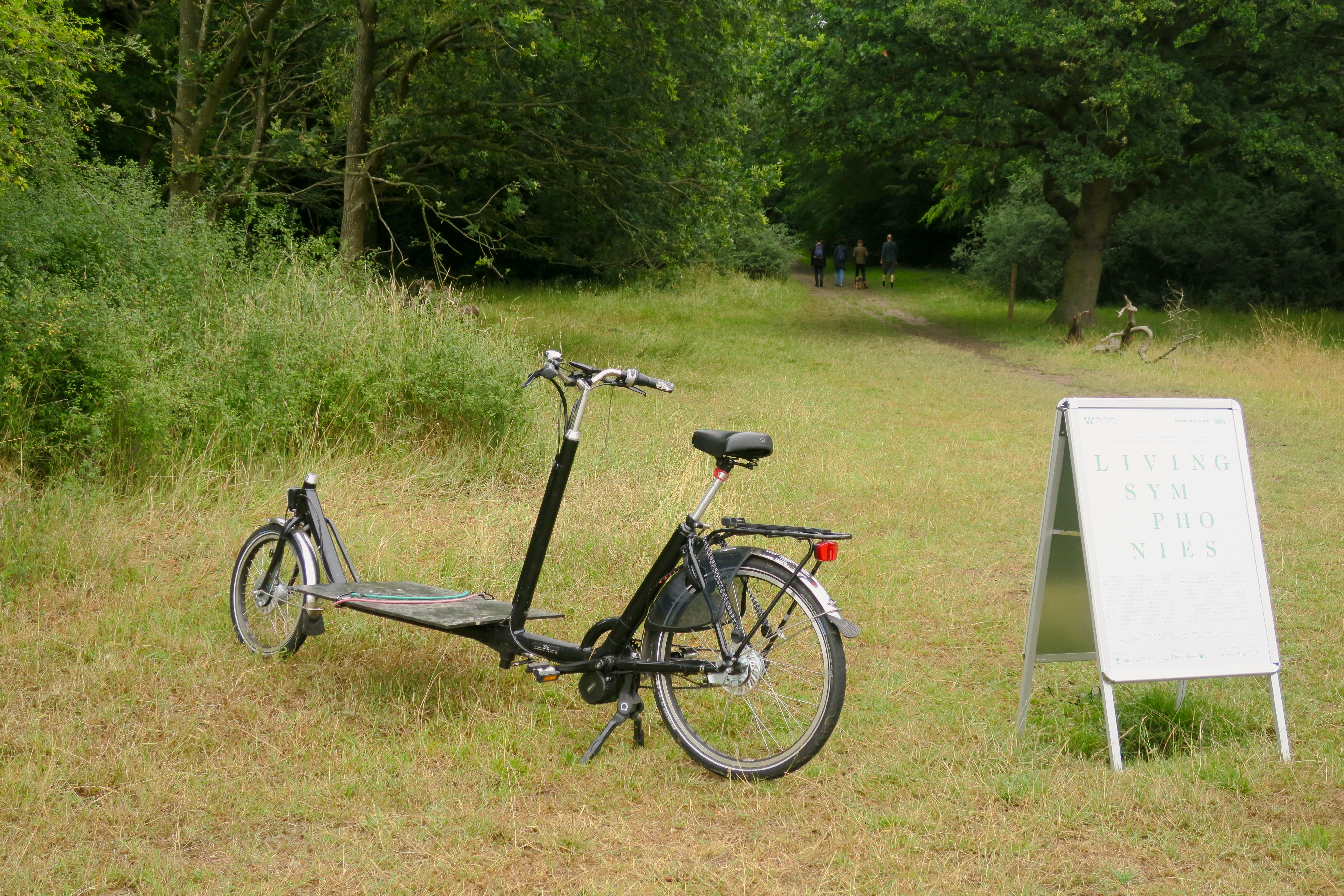We came down the hill and over Chingford Plain and joined others arriving from north and south in a steady stream flowing into the woods. I thought of Geoffrey Chaucer – Those that sleep all the night with open eyes… Then folk long to go on pilgrimages… We really should’ve known about this, but it crept up and took us by surprise. We’d been here just a few weeks before, but walking in the opposite direction. Today, 28th July, we got to see it just in time, on its last day in Epping Forest.
And I got the best welcome. The couple who were reading this notice stepped aside to share it with me, and just as I knelt to see it, their lively young lurcher jumped up and kissed me full in the face!
Living Symphonies is a musical composition that grows in the same way as a forest ecosystem. Portraying the thriving activity of the forest’s wildlife, plants and atmospheric conditions, it creates an ever-changing symphony heard amongst the forest itself.
Working with ecologists and wildlife experts from Epping Forest, artists Jones/Bulley have developed a detailed map of the flora and fauna inhabiting an ecologically diverse area of the forest. Each species is depicted by a unique set of musical motifs that portray its changing behaviours over the day and night; coming to life as the species awakens, and moving, developing and interacting just as the organism it represents. Dozens of these motifs can be heard at any moment, mapped across the real space of the forest and heard back through a three-dimensional speaker system.
Living Symphonies is part of Waltham Forest London Borough of Culture 2019’s The People’s Forest art programme. Curated by Kirsteen McNish and Luke Turner, the season explores the complexity of our human relationship to the forest and the myriad of meanings that were placed upon woodlands.
The People’s Forest is a year-long celebration of Epping Forest as London’s urban woodland. Visit the Waltham Forest London Borough of Culture 2019’s website – wfculture19.co.uk – for details of more events coming up this year.
Living Symphonies was originally commissioned by Sound and Music and Forestry Commission England, and toured in 2014 with the support of an Arts Council England Strategic Touring Grant.
Four-part oak harmony
Solo hornbeam pollard
An on-site weather station is linked to a model of local ecosystems which mimic the behaviours of flora and fauna via a catalogue of pre-recorded musical instrument motifs. It’s the sonic equivalent of the light through the leaves. But after a week of extreme temperatures the sun was now nowhere to be seen, and so today we were bathed in a downpour of dappled and slightly overcast sounds.
Backstage
Unlike a conventional piece of music, Living Symphonies is ever-changing. It is conducted by a sophisticated software model of the ecosystem that is continually growing and evolving, responding to the real-time weather conditions within the forest. This model is used as the seed to create new musical forms, reflecting the thriving ecological world that it inhabits. Living Symphonies seeks to provide a platform for exploring a forest ecosystem through music, portraying the complex web of interactions that make up each site. It highlights the importance of every inhabitant within the ecosystem, from moss and fungus to hornbeam and buzzard. The piece aims to explore new approaches to musical composition, conducted directly by the forest ecosystem that surrounds it.
Maybe I should just stand still and absorb it all transcendentally, but I can’t help roam around, with my camera held aloft, moving Tai Chi style, soaking up the ambience and the ambulatory tree dance.
And lots of other folks doing just the same. So many little interwoven movies.
The sounds coming down are all falling together as newborn music. I wonder what the trees made of it all? In other hands this might have sounded like a bull in a china shop, but here, today, it was just the opposite. A butterfly in a florist shop; a bird in a picture framer’s; a bee in a piano shop. The choice of musical instruments; the shapes of their phrases; the placement of the speakers; it was all done with the greatest sensitivity. Now that it’s over I’m sure the trees must be missing the company.
It seemed like we’d discovered the sound of the songs that the trees sing to each other.
Jennymay Logan (Violin), Ellie Wilson (Violin), Chloë Herington (Bassoon), Sarah Anderson (Violin), Sam Glazer (Cello), Keir Vine (Percussion, Editing, Hang, Piano, Prepared Piano, Harmonium, Rhodes Organ), David Aird (Tuba), Teleri Dyer (Harp), Alex Eichenberger (Cello), Katie English (Bass Flute, Concert Flute), Milo Fitzpatrick (Double Bass, Voice), Peter Gregson (Cello), Simon Hewitt Jones (Violin), Hywel Jones (Trombone, Euphonium), Charly Richardson (Soprano Saxophone, Tenor Saxophone, Clarinet, Voice)
※
L I V I N G
S Y M P H O N I E S












A lovely celebration of a lovely celebration (particularly appreciate the ‘bird in a framer’s shop or a bee in a piano shop’). Great installation, a wonderful gift to the forest.
It was great wasn’t it! Much better than I expected. It didn’t feel at all like an unnatural intervention. I just wish I hadn’t waited until the last day to visit. I should’ve been every day.